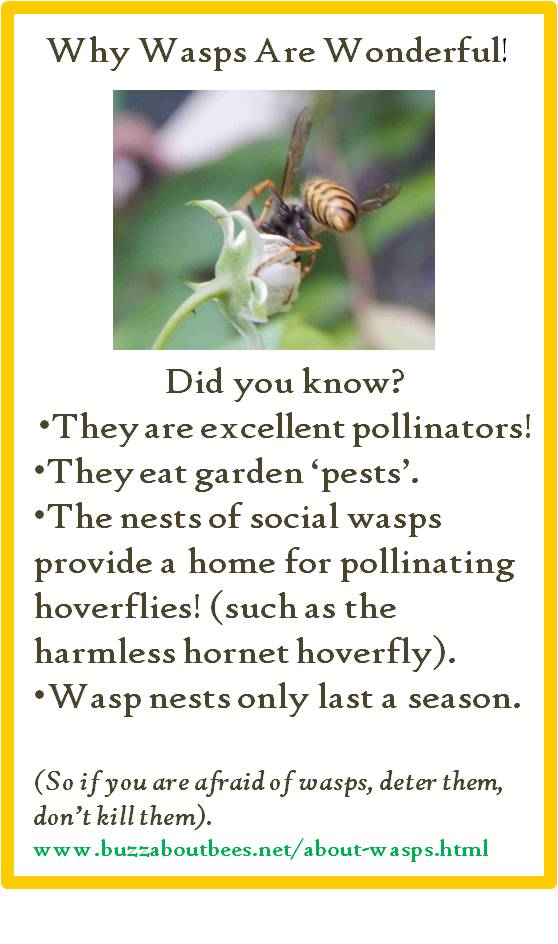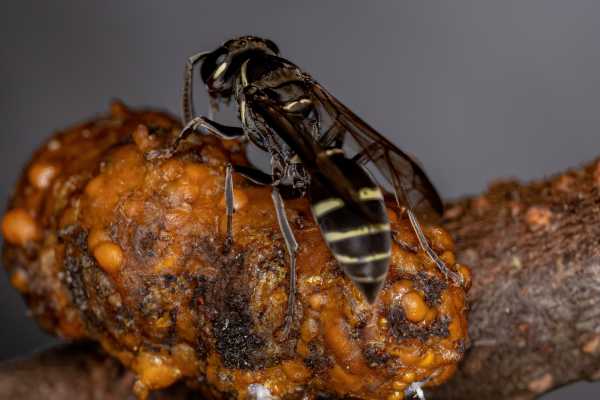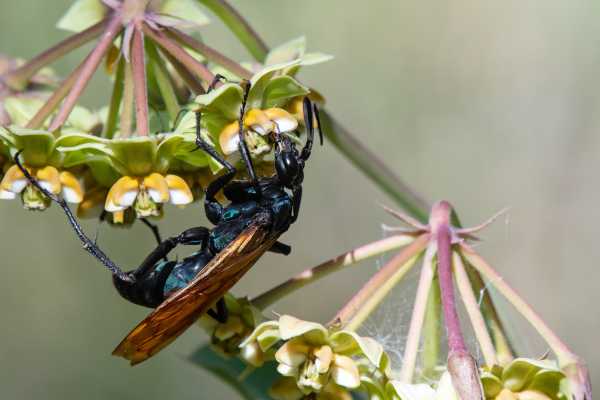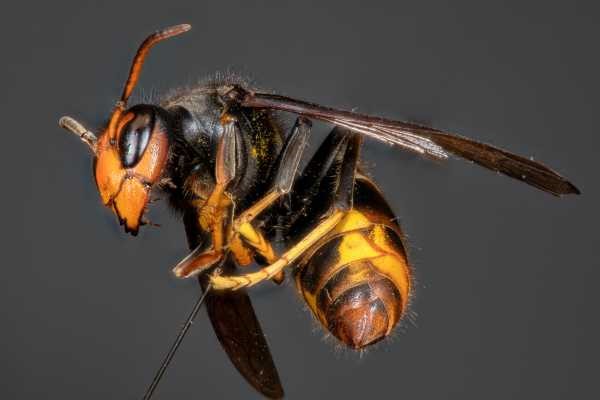The Wasp Life Cycle
Wasps And The Wasp Life Cycle
There are 4 key stages of the wasp life cycle.
As with bees, wasps pass through the phases of egg, larva, pupa, and then emerge as adult wasps.
This process is the same for social and solitary wasp species, despite the tremendous variation in factors such as the immediate environment of developing offspring, and lifespans of different species.
The Wasp Life Cycle
For me, the wasp life cycle is interesting. But why digress into the subject of wasps given that this website is about bees?
Bees are descended from sphecoid wasps, and as such, bees and wasps are related.
In fact, the author and entomologist, Eric R. Heaton, points out that bees really are a type of hairy wasp1!
Along with ants and sawflies, they both belong to the insect order hymenoptera.
Here, we'll look at the stages of the wasp life cycle, whilst highlighting examples of a few of the many variations.
Stage 1: Egg
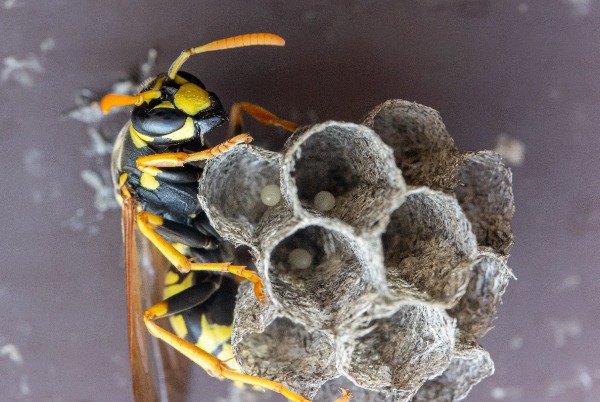 Note eggs with the appearance resembling rice grains, inside nest cells.
Note eggs with the appearance resembling rice grains, inside nest cells.As with bees, the life cycle of the wasp starts with the laying of an egg by a fertile (mated) female wasp. Where this egg is laid depends on the species of the wasp.
For example, in social wasps, the queen of Polistes species lays her eggs in cells she herself constructs from plant matter. These whitish eggs resemble small grains of rice poking up from the bottom of each cell.
In contrast, potter and mud dauber wasps lay a single egg inside a ‘pot’ the female builds from clay and mud.
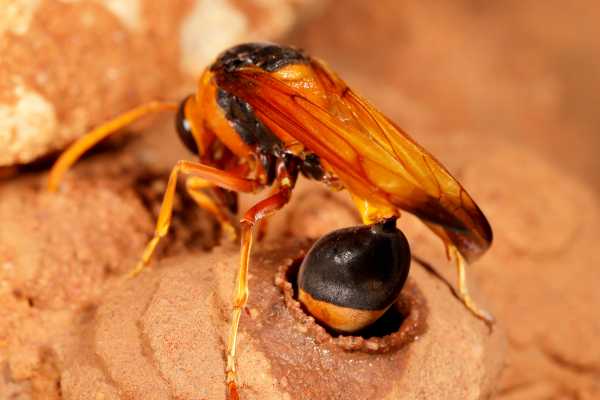 Female Orange Potter Wasp, Eumenes latreilli depositing egg in mud nest chamber
Female Orange Potter Wasp, Eumenes latreilli depositing egg in mud nest chamberBraconid wasps in the genus Cotesia have an entirely different strategy. The females target caterpillars, such as the Carolina Sphinx Moth caterpillar (also known as Tobacco Hornworm), Manduca sexta. The wasp lays around 65 eggs in the hemolymph (invertebrate ‘blood’) which develops into a larva inside the body of the caterpillar2.
A similar strategy is employed by the jewelled cockroach moth, a predator of pest cockroaches. The activities of such parasitic wasps are regarded as beneficial to the environment, as well as providing natural ‘pest control’.
As with bees, fertilized eggs become female wasps, unfertilized eggs develop into males.
Stage 2: Larva
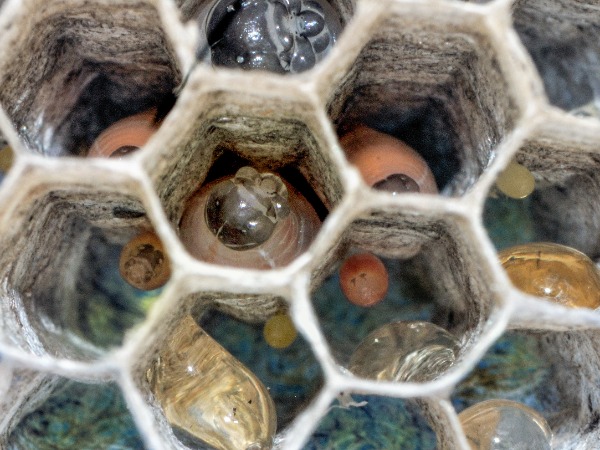 Wasp larvae at various stages of development inside cells, older larvae having the appearance of a grub or maggot.
Wasp larvae at various stages of development inside cells, older larvae having the appearance of a grub or maggot.Larvae spend their time eating and growing (and molting) inside the cell or cavity in which they developed from an egg.
As they molt (a process regulated by the insect’s hormones), they shed their exoskeletons, and expand whilst the new exoskeleton still remains sufficiently supple.
Intervals between molts are called instars, and Eaton notes there are on average 3 – 5 instars although the number varies1.
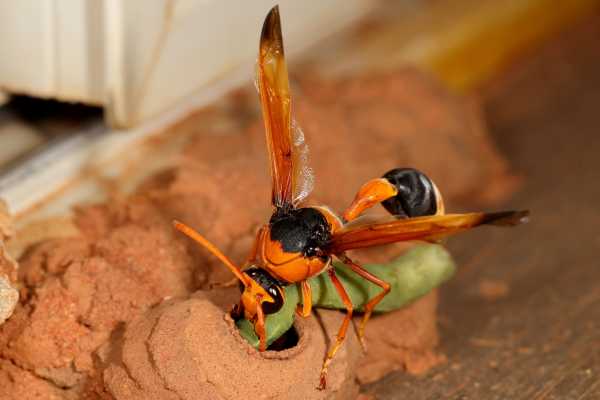 Female Orange Potter Wasp Eumenes latreilli placing caterpillar in mud nest chamber for her larvae on hatching
Female Orange Potter Wasp Eumenes latreilli placing caterpillar in mud nest chamber for her larvae on hatchingMany wasp species rely on high protein foods consisting of other invertebrates which are hunted by the adult and are provided as dead prey.
Other species provide live invertebrate food, such as single spiders or flies, which are paralyzed and placed whole inside the larval cell. They remain alive until eaten by the wasp larva.
In other cases, the wasp larva grows inside the host, eating it from the inside.
The larvae of some wasp species are vegetarian. The gall wasps for example, rely on cellulose (plant matter) provided by a gall they induced to form in the host plant.
(See What do wasps eat?).
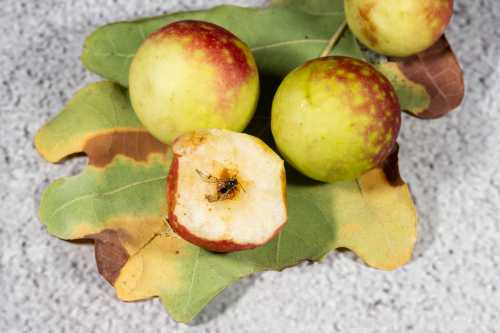 Wasp Galls
Wasp GallsIn some species, the larva will undergo a prepupa stage that lasts through winter.
As with bees, there are species that form cocoons.
The image below may appear to show eggs on the body of a Tobacco Hornworm Caterpillar, Manduca sexta, but the white rice-shaped objects firmly attached to its body are actually cocoons of a Braconid wasps, Cotesia congregata.
The larvae erupt from the body of the caterpillar synchronously to pupate2.
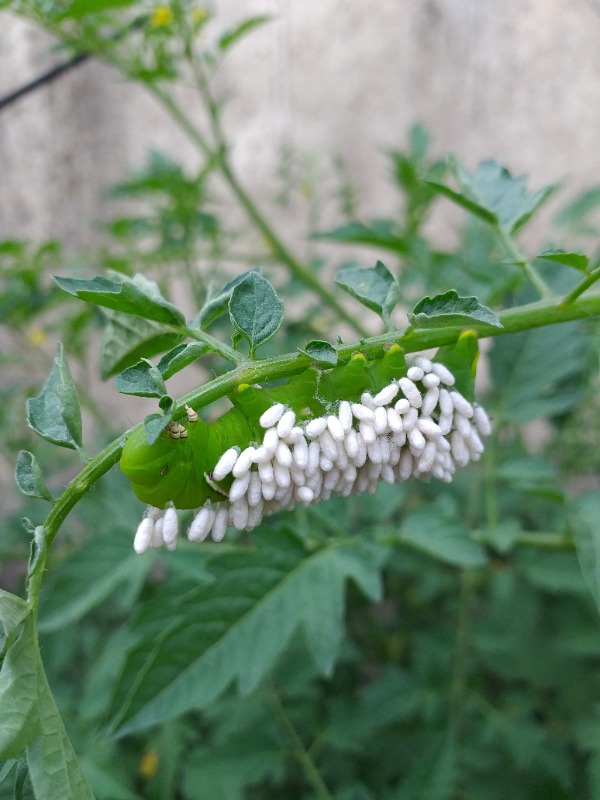 Tobacco Hornworm Caterpillar, Manduca sexta being parasitized by wasp larva Cotesia congregata, on cherry tomatoes ( Solanum diploclonos).
Tobacco Hornworm Caterpillar, Manduca sexta being parasitized by wasp larva Cotesia congregata, on cherry tomatoes ( Solanum diploclonos).The larvae of paper wasps grow and develop until they fill the larval cell in which they hatched from egg.
They then begin spinning a silken dome over the cell, after which, they will begin to pupate.
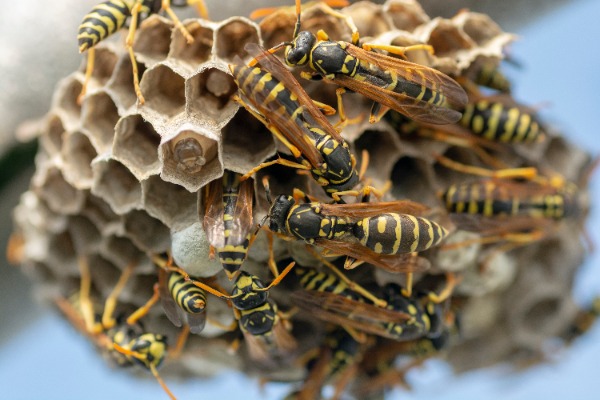 A large larva and some covered cells (where larvae will pupate) in the nest of Vespula germanica
A large larva and some covered cells (where larvae will pupate) in the nest of Vespula germanicaStage 3: Pupa
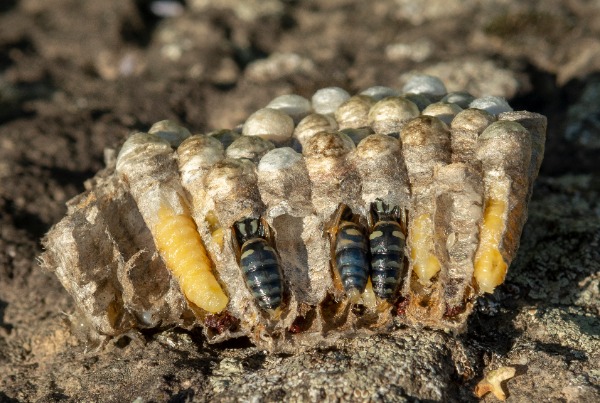 Pupae of the German wasp Vespula germanica in nest cells.
Pupae of the German wasp Vespula germanica in nest cells.As the wasp pupates, it goes through a transformation process, growing legs, wings, and developing visibly separate body parts (head, thorax, abdomen) and eyes.
Stage 4: Adult
Eventually, once development is complete, the adult will chew its way through the nest cell or cavity if necessary, and emerge as a fully grown adult wasp.
What good things do wasps do?
Overwhelmingly, wasps perform an important function in the ecosystem, including natural pest control and plant pollination.
If you are concerned about wasps you can take action to deter wasps without killing them.
Do wasps attack bees?
Bees and wasps are commonly seen foraging on the same shrub. However, wasps will sometimes attack bee nests, usually hunting invertebrate matter to feed to wasp larvae.
Bees can usually repel an occasional wasp (and some honey bee species have even developed strategies to defend themselves against hornets), but a large number of wasps could be a challenge of a bee colony.
Should I kill wasps to protect bees?
No.
The best way to help bees generally is not by destroying wasps, but by filling our gardens with plants for bees and cutting out harmful insecticides. This will go some way to help reduce the impact of habitat loss.
References
1. Eric R. Heaton; Wasps – The Astonishing Diversity Of A Misunderstood Insect, Princeton University Press 2021.
2. University Of Florida, Featured Creatures - Cotesia congregata.
If you found this page helpful or interesting, I'd really be grateful if you would share it with others - if not this page, perhaps another, such as Gardening For Bees.
Thank you so much :) .
